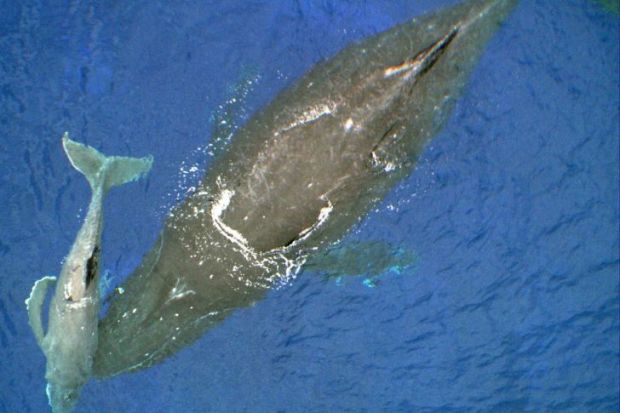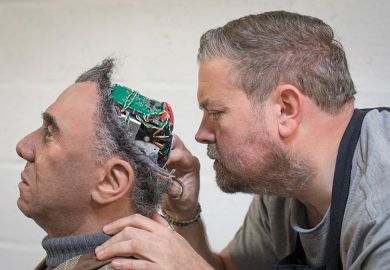New Zealand scientists have notched a new high water mark in cetacean research by using a drone to record humpback whales’ vital signs.
A New Zealand, US and Cook Islands research team harnessed a quad-copter drone equipped with an infrared camera to measure the temperature, respiration and heart rate of a free-swimming mother whale and her weeks-old calf.
The achievement, outlined in the journal Frontiers in Marine Science, has emerged as scientists look for non-invasive ways to study the oceanic giants, whose numbers are rebounding after they were decimated by decades of whaling.
“Measuring whale health remains a longstanding challenge for cetacean scientists and conservationists,” said team leader Travis Horton, an environmental geochemist at the University of Canterbury. “Advances in drone technology, infrared imaging and data-processing have created unique opportunities to help whales survive.”
Every southern winter, humpback whales migrate from Antarctic waters to breeding grounds in tropical Oceania. Humpbacks in Polynesia are called paikea in a reference to a Māori legend about a young man rescued by whales.
Dr Horton’s team deployed the drone in Rarotonga, in the Cook Islands, during the 2018 calving season. The researchers observed from shore as the aircraft recorded high-resolution infrared videos of the two whales resting near the ocean’s surface over several hours.
The infrared data enabled measurement of body temperature, breathing and heart rate based on changes in skin temperature at the blowholes and dorsal fin. The results established, among other things, that the calf breathed three times a minute – six times as frequently as the mother – and the pair’s blowholes were around 2C warmer than the surrounding waters.
The paper says that while such signs are “important indicators” of whale health, the use of infrared thermography (IRT) to monitor marine mammals in the wild has so far been limited to bottlenose dolphins and seals.
It says the team’s achievement demonstrates the potential of airborne IRT for gauging cetaceans’ response to environmental changes and “acute disturbances”.
Drones are harnessed to track many sorts of environmental changes such as coastal erosion, volcanic activity, coral distribution and Arctic ocean conditions. They can be used to monitor air pollution and crop height and to recharge the batteries of remote scientific sensors.
Researchers at Sydney’s Macquarie University have used drones to collect spray from whales’ blowholes and sample the bacterial communities living in the giant mammals.
Register to continue
Why register?
- Registration is free and only takes a moment
- Once registered, you can read 3 articles a month
- Sign up for our newsletter
Subscribe
Or subscribe for unlimited access to:
- Unlimited access to news, views, insights & reviews
- Digital editions
- Digital access to THE’s university and college rankings analysis
Already registered or a current subscriber?









